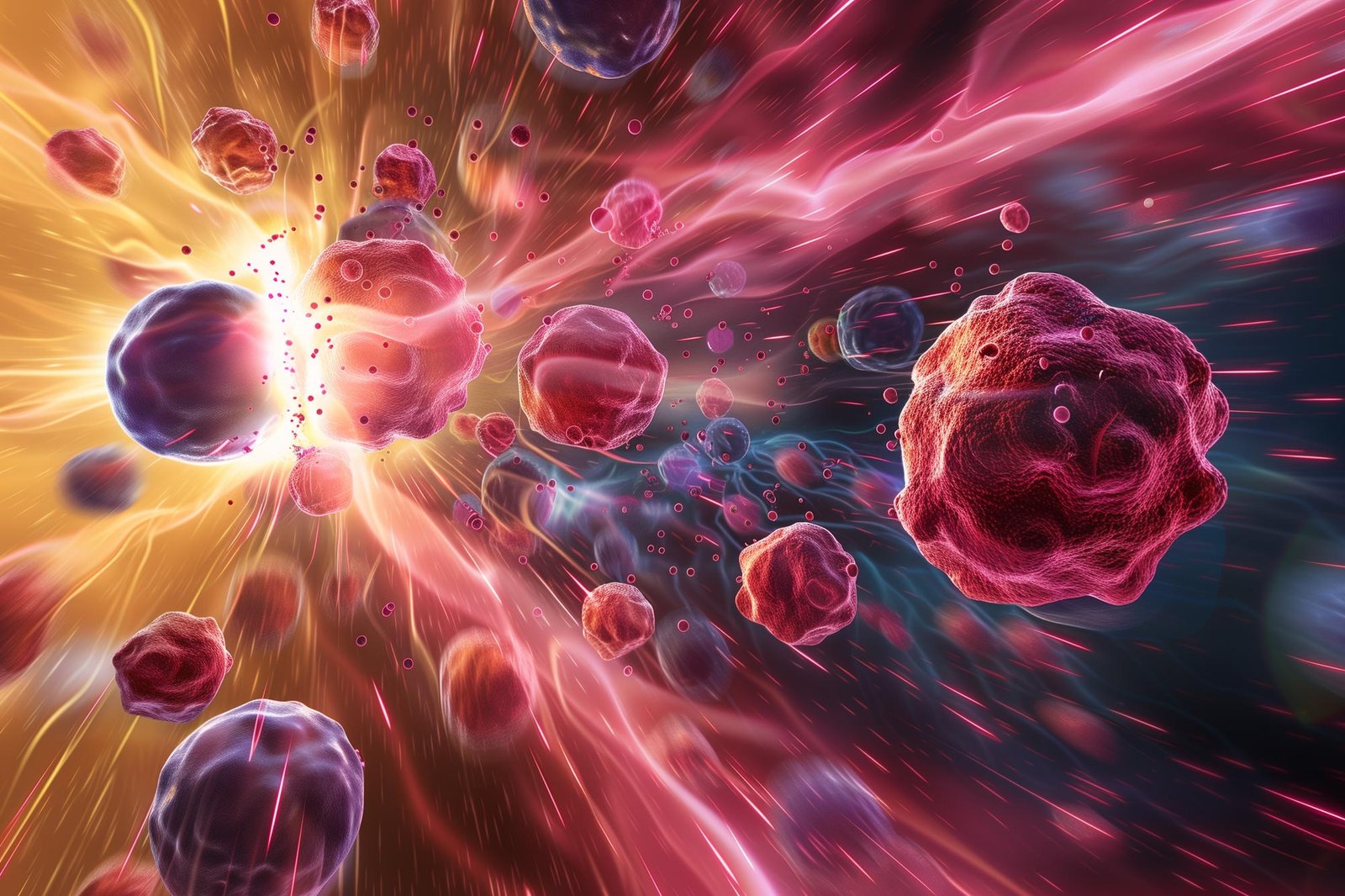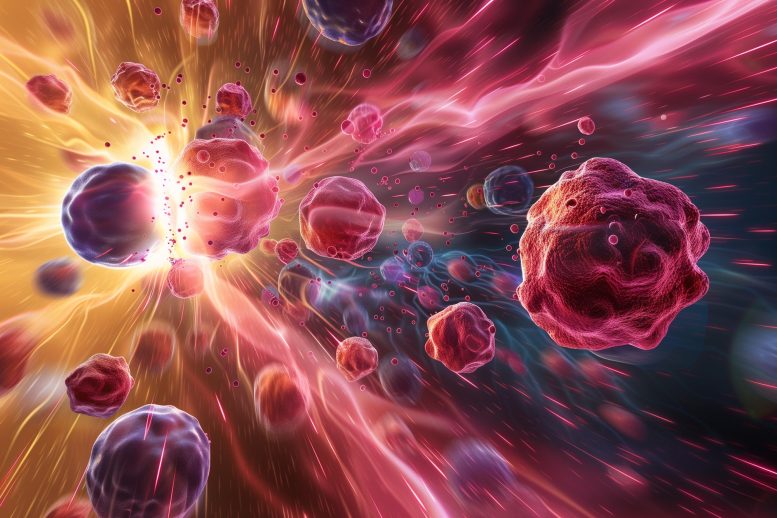
New Nanoparticle Cancer Treatment Successfully Shrinks and Eliminates Pancreatic Tumors
-
by Anoop Singh
- 9

Innovative research has led to a new treatment for pancreatic cancer that utilizes nanoparticles to stimulate immune responses and improve drug delivery.
This strategy has produced significant results, with eight out of nine mice showing tumor improvements and two seeing their tumors completely eradicated. This approach holds promise for broader applications in oncology.
Innovative Pancreatic Cancer Therapy Development
Researchers at the University of Massachusetts Amherst and UMass Chan Medical School have demonstrated in mice a new method to combat pancreatic cancer. The study, published in Science Translational Medicine, outlines the synergistic effects of a novel nanoparticle drug-delivery system to activate an immune pathway in combination with tumor-targeting agents.
Pancreatic ductal adenocarcinoma (PDAC) is the most common form of pancreatic cancer. With a dismal,13% five-year survival rate, it is the third leading cause of cancer deaths.
One major challenge is the microenvironment surrounding the tumor. This environment is characterized by dense tissue creating a barrier around the tumor that inhibits blood vessel formation and blocks immune infiltration.
Breakthrough in Drug Delivery Systems
“Drug delivery is a huge challenge due to the architecture of these difficult-to-treat tumors’ microenvironment,” says Prabhani Atukorale, assistant professor of biomedical engineering at UMass Amherst and one of the corresponding authors of the paper. She adds that the environment also blocks the activation of the body’s immune cells and their penetration into the tumor.
Enhancing Immune Response Against Cancer
“Pancreas cancer, unfortunately, doesn’t respond to most conventional therapies like chemotherapy, or even immunotherapy, which has revolutionized a lot of cancer therapy in the last 10 years,” says Marcus Ruscetti, assistant professor of molecular, cell and cancer biology at UMass Chan Medical School, and the other corresponding author.
Ruscetti’s previous research demonstrated that two cancer drugs (MEK inhibitor trametinib and CDK4/6 inhibitor palbociclib, or T/P) can promote blood vessel development, enabling greater T cell (as well as chemotherapy) delivery into the tumor. However, the cancer “tricks” the immune system into thinking that the tumor is just a regular, healthy clump of cells. Since the T cells aren’t activated, simply having more of them present won’t clear the cancer.
Here’s where the researchers want to implement a trick of their own. The first pathway is called the stimulator of interferon genes (STING) pathway. STING recognizes viral infections in the body. “If we can trick the immune system into thinking that there is a viral-type infection, then we harness a very robust anti-tumor immune response to bring in for tumor immunotherapy,” Atukorale explains.
Advanced Nanoparticle Design for Drug Delivery
The researchers also wanted to activate the TRL4 pathway because it boosts the effects of STING activation. They use agonists, which are any chemicals that can trigger a biological response; in this case, in immune stimulatory pathways. But getting these immunity-triggering chemicals through the tumor’s microenvironment is still a challenge.
The researchers’ solution: encapsulating the STING and TRL4 agonists in a novel design of lipid-based nanoparticles. The nanoparticles have several benefits. First, the research demonstrated that they are highly effective at delivering the agonists into the challenging tumor microenvironment.
The design also allows both of the agonists to be packaged together — a challenge since these two mix as well as oil and water. “It ensures that they are carried within the blood circulation together, they reach the same target cell together and are taken up together by the same target cell,” says Atukorale.
“We’re using biocompatible, lipid-based materials to encapsulate drugs that functionally work together, but don’t like to be next to each other, and then we are able to use engineering capabilities to build in various functionalities to direct them where they need to go,” she says.
Significant Outcomes and Future Prospects
The synergistic effect of the two agonists plus the T/P therapy proved effective: eight out of nine of the mice saw tumor necrosis and shrinkage. “And we had two mice that had complete responses, meaning the tumors completely went away, which is pretty striking,” says Ruscetti. “We’ve never seen that in this model before.”
There is still work to be done because the tumors returned after the mice were taken off of the treatment, but Ruscetti says it is still a very encouraging step toward a cure.
Personalizing Cancer Treatment
“If you go beyond pancreas cancer to other cancer types, you need a combination therapy to target the tumor and to target the immune system,” he adds. “This is a strategy to be able to do that.” Treatments for cancers like PDAC that could be derived from this study include mutations of colon cancer, lung cancer, liver cancer and cholangiocarcinoma (cancer of the bile ducts).
Prabhani adds that the modular nature of this design allows for therapies that can be easily personalized for patients. “It’s sort of plug and play,” she says. “We can tailor the agonist ratios, the drug combinations, the targeting molecules, but keeping essentially the same platform. This is what will make it hopefully translational, but also tunable on a per patient basis, because many of these cancer therapies need to be personalized.”
Finally, she nods to the power of collaboration between the two UMass institutions, saying, “This type of system is easily built when you have complementary, but multidisciplinary and cross-disciplinary, expertise.”
Reference: “Nanoparticle delivery of innate immune agonists combined with senescence-inducing agents promotes T cell control of pancreatic cancer” 28 August 2024, Science Translational Medicine.
DOI: 10.1126/scitranslmed.adj9366
Researchers have developed a new therapy for pancreatic cancer involving nanoparticles that stimulate immune responses and improve drug delivery. This innovative method has led to significant tumor reduction in mice and holds potential for treating other cancers. Credit: SciTechDaily.com Innovative research has led to a new treatment for pancreatic cancer that utilizes nanoparticles to stimulate…
Researchers have developed a new therapy for pancreatic cancer involving nanoparticles that stimulate immune responses and improve drug delivery. This innovative method has led to significant tumor reduction in mice and holds potential for treating other cancers. Credit: SciTechDaily.com Innovative research has led to a new treatment for pancreatic cancer that utilizes nanoparticles to stimulate…
